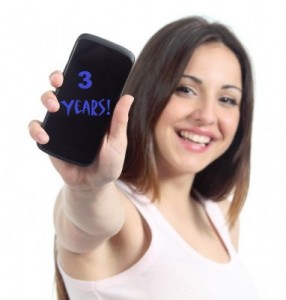The newly released mobile wallet from Apple is already being shut down by the competition.
According to The New York Times, Rite Aide and CVS Health, two prominent retailers in America, stopped Apple Pay from working in their stores across the country over this past weekend, and although the decision may not make sense in terms of ensuring customer satisfaction, as a business decision it makes more sense considering these retailers and others are planning to implement a mobile payments system that will compete with Apple’s.
A group of retailers are currently working on a mobile payments system called CurrentC
Although CVS did not comment on the decision, A Rite Aid spokesperson, Ashley Flower, said that Rite Aid “does not currently accept Apple Pay,” and that the company was “still in the process of evaluating [its] mobile payment options.”
Furthermore, while Apple also declined to comment on the recent actions taken by the retailers, the chief emerging payments officer at MasterCard, Ed McLaughlin, said that MasterCard believes customers should be able to pay using any method they want and that Rite Aid and CVS made the wrong choice. The well-known credit card company has teamed with Apple on the new system.
However, while the move made by many retailers across the US to disable Apple’s contactless payments has come as a surprise to many, analysts say that disabling Apple Pay could have been a decision that was made to benefit a rival m-payments system known as CurrentC, which is currently being developed by Merchant Customer Exchange (MCX), a consortium of merchants, which include CVS, Rite Aid, Gap Inc., Walmart, and Best Buy, among others.
Many believe that Apple Pay will give CurrentC a run for its money.
 CurrentC, which is set to be released in 2015, will be connected to the debit account of consumer’s who uses it via an app that users download. This means the payments system would bypass credit card companies, which could mean that merchants might potentially save money on how much they pay in fees for every transaction. To make a purchase, the merchant has to scan a QR code, which initiates the transaction.
CurrentC, which is set to be released in 2015, will be connected to the debit account of consumer’s who uses it via an app that users download. This means the payments system would bypass credit card companies, which could mean that merchants might potentially save money on how much they pay in fees for every transaction. To make a purchase, the merchant has to scan a QR code, which initiates the transaction.
Apple Pay, on the other hand, only works with the company’s newly released iPhone 6 devices and it basically supplants tradition credit cards, giving consumers the power to pay for their merchandise with a wave of their smartphone using NFC (near field communication) technology. Presently, over 220,000 retailers are equipped with this technology.
The New York Times reported that those who are opposed to CurrentC say that the system will be harder to use than Apple Pay, as it will require customers to unlock phones or open an app, which is more complex than simply paying with a credit card or cash. McLaughlin believes Apple will win in the end because its payment system “is the most convenient, most secure, and what’s best for consumers.”

 Worden stated that she feels that the credit card industry should be pushing mobile wallets more than they actually are due to the spectrum of advantages it has to offer them. The lack of plastic card manufacturing and distribution, on its own, has great cost saving potential, however, there is a psychological element that Worden feels should not be overlooked.
Worden stated that she feels that the credit card industry should be pushing mobile wallets more than they actually are due to the spectrum of advantages it has to offer them. The lack of plastic card manufacturing and distribution, on its own, has great cost saving potential, however, there is a psychological element that Worden feels should not be overlooked.